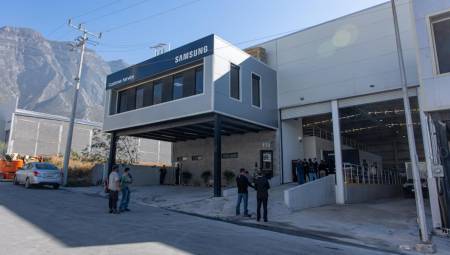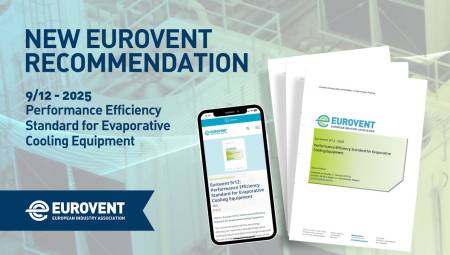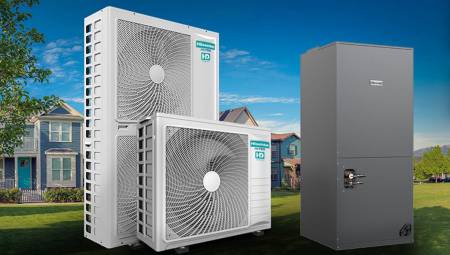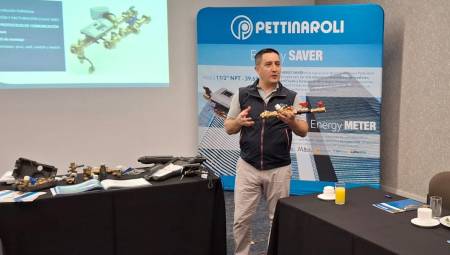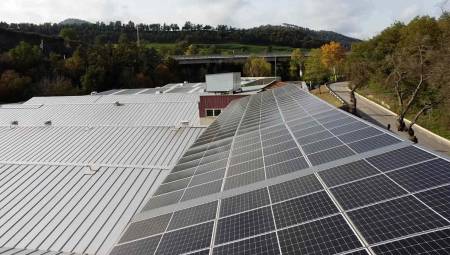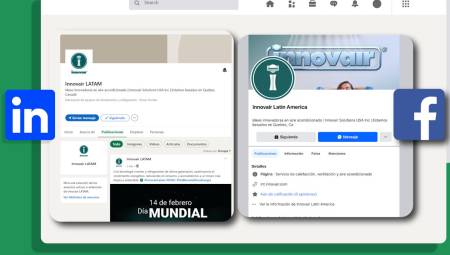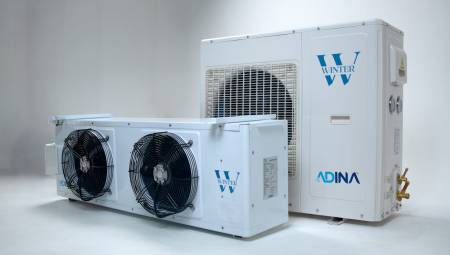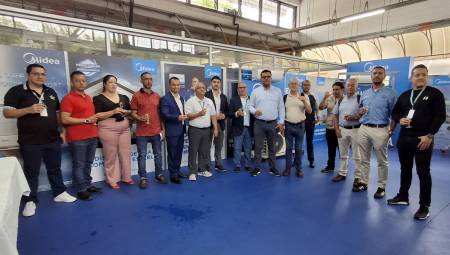 International. Emerson released results for the second quarter ended March 31, 2019. Second-quarter net sales were up 8 percent, while underlying sales were up 4 percent, excluding an unfavorable 2 percent currency and a positive impact from acquisitions of 6 percent.
International. Emerson released results for the second quarter ended March 31, 2019. Second-quarter net sales were up 8 percent, while underlying sales were up 4 percent, excluding an unfavorable 2 percent currency and a positive impact from acquisitions of 6 percent.
Underlying growth reflected broad-based global demand in hybrid processes and end markets and continued strength in the North American professional tool and air conditioning markets. This was partially offset by softer conditions in global discrete manufacturing end markets and a slower-than-expected recovery in the Commercial and Residential Solutions business from Asia, the Middle East and Africa.
Gross profit margin of 42.1 percent in the second quarter was down 70 basis points, reflecting an unfavorable combination, modest dilution of recent acquisitions and $7 million of first-year acquisition accounting charges related to ge Intelligent Platforms' business. The pre-tax margin of 14.8 percent and the EBIT margin of 15.8 percent were down 70 basis points and 50 basis points, respectively, reflecting the dilution of recent acquisitions. GAAP earnings per share were $0.84 in the quarter, up 11 percent from a year earlier.
Second-quarter operating cash flow increased 7 percent to $533 million, and free cash flow increased 3 percent to $414 million.
"Demand in the second quarter was healthy in all areas of the world. Automation Solutions continued to drive a healthy mix in its three types of businesses: maintenance and repair expenses, brownfield projects, and investments in greenery," said President and Chief Executive Officer David N. Farr. "Trends in our Commercial and Residential Solutions end markets improved overall, and we are optimistic about returning to solid growth in the second half. We remain confident in the cycle and the medium- and long-term growth outlook we discussed at our February investor conference."
Business Platform Results
Automation Solutions' net sales increased 9 percent in the quarter, while underlying sales increased 7 percent, excluding an unfavorable 3 percent currency and a positive impact from acquisitions of 5 percent.
In the Americas, underlying sales increased 9 percent, reflecting broad demand and continued MRO projects and small and medium-sized business projects. The Industrial Solutions business, which primarily serves discrete manufacturing end markets through distribution, was positive but slowed compared to the first quarter, reflecting lower short-cycle demand and some channel inventory rebalancing from last year's tariff impact and price increases.
Underlying sales from Asia, the Middle East and Africa rose 6 percent, supported by infrastructure investment activity across the region. Europe grew by 1 percent, reflecting steady demand in most key end markets, including oil and gas, chemicals and life sciences.
Margin declined 90 basis points to 14.8 percent and fell 10 basis points to 15.6 percent, excluding acquisitions of Aventics and GE Intelligent Platforms due to higher investment spending, currency losses and an unfavorable mix.
Net sales of Commercial and Residential Solutions increased 5 percent in the quarter, and underlying sales remained stable, excluding an unfavorable currency of 2 percent and a positive impact of acquisitions of 7 percent.
In the Americas, underlying sales increased 4 percent due to solid growth in residential and commercial air conditioning. Europe grew by 2 percent, reflecting steady trends in professional tools and heating and air conditioning markets. Asia, the Middle East and Africa were down 15 percent. China is down 16 percent, but is improving in line with previous expectations.
For the full year, management expects net sales growth of approximately 7% and underlying sales growth of approximately 2%, reflecting continued improvement in Asia and a favorable outlook in the North American commercial and residential air conditioning markets. Given the lower sales expectation of 2019, incremental growth investments were reduced and some cost actions accelerated to protect the margin target for the full year. The margin is expected to be about 22 percent, according to the plan they presented at the February investor conference.



